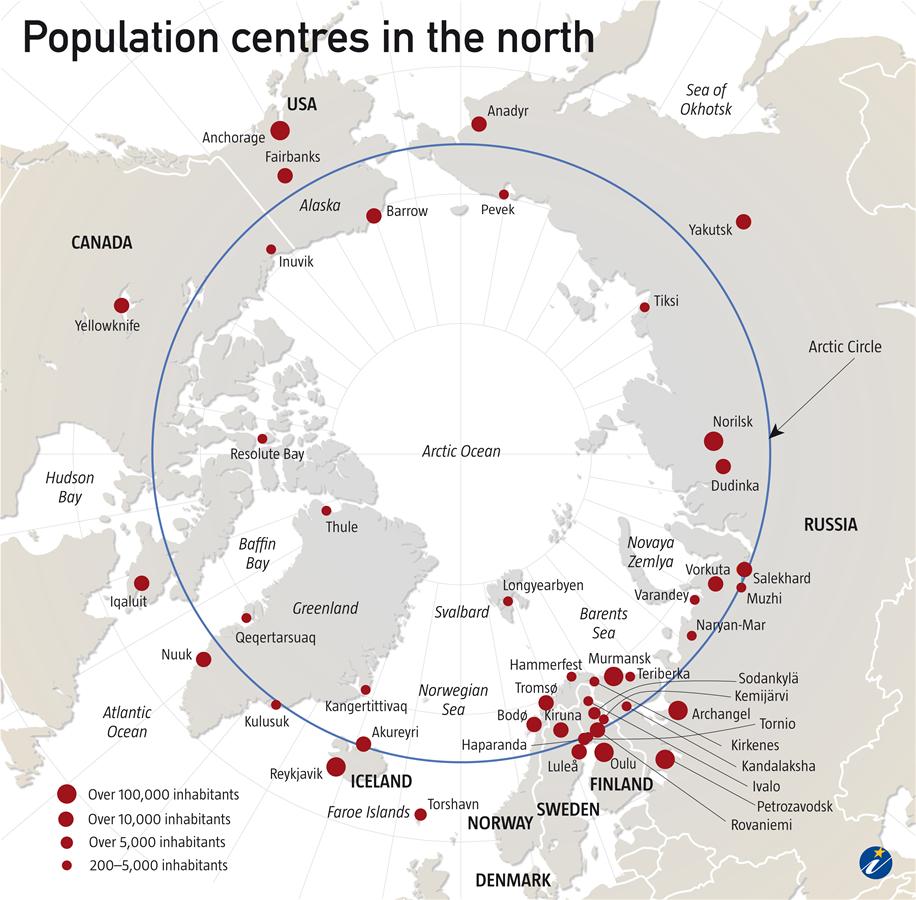Why cross-border cooperation is a key to the sustainable development of Arctic cities and towns
Arctic urban communities will need to learn from each other to succeed in a rapidly changing future.

Just as the Arctic is changing rapidly, the historical perception of the Arctic as a remote spot is also drastically shifting to a view of the region as a center for the world’s future mineral resources production, tourism, and marine shipping.
While the region is experiencing this transformation, an important question is how this change will impact Arctic cities and towns, with relatively low populations, ranging from 300,000 to just a few thousand inhabitants.
More specifically, will Arctic urban settlements be able to transform into international cultural hubs like Paris and Berlin? Or will we see more Detroit-style single industry-based towns such as Russia’s Norilsk, whose economy is dominated by a single mining company, Nornickel.

The good news is that there are already successful examples of Arctic cities that have managed to transform the emerging opportunities into long-term sustainable growth. The Norwegian municipality of Tromsø, historically dependent on trade and the fisheries sector, has managed to diversify the sources of its economic growth by establishing its university in 1972 and commercializing its research. In 2013, 27 percent of the city’s population was employed in the agriculture, fishery and construction sectors, while the education sector provided jobs for the 13 percent of the population. The municipality of Tromsø has also been emerging as a destination for cruise ships and individual tourism, attracting 194,000 tourists in 2016/17.
Embarking on a path of thriving communities, Arctic cities and towns have to address serious financial, socio-economic, environmental and infrastructure challenges. For instance, according to some estimates, the construction of a 500-mile road to connect the Alaska city of Nome would cost up to $2.7 billion (or $4.6 million to $5.4 million per mile), while its maintenance and upkeep will add an additional $40 million annually. Furthermore, to guarantee food security in the Russian Arctic, in 2016 the federal and regional governments, and businesses allocated 110 billion rubles (about $1.7 billion) for the annual northern delivery.
Arctic monocities are also vulnerable to fluctuations in the global economy. Around one-fourth of the cities in the Russian Arctic are monocities, which could face high rates of unemployment and impoverishment of their population as a result of a sharp decrease in the world demand for specific natural resources.
[Grappling with shared issues, northern mayors have created an international Arctic cities’ forum]
Facing all these challenges and constraints, how will Arctic cities and towns transform into vibrant urban settlements instead of being left behind? While there are many pieces that need to come together for success, a part of the solution seems to be the enhancement of cooperation between Arctic urban settlements within and across national borders to support one another in finding solutions and advocating regionally and internationally to make them happen.
The good news is that there are already functioning Arctic international regional and municipal institutions, including the Northern Forum and the Barents Regional Council, and the Arctic Mayors Forum, first begun as a roundtable at the Fairbanks Arctic Council Ministerial meeting in 2017, and formally inaugurated in Iceland last week. Since 1993 the Norwegian Barents Secretariat has supported more than 3,500 Russian-Norwegian regional projects covering topics of culture, environment, indigenous population, health and economic development. This cooperation has proven to promote collaborative relations on the regional level by bringing people together from Russia and Norway to address common problems through joint actions and sharing of experience and knowledge.
To advocate regionally and globally regional interests and problems, Arctic cities have embarked on a path to become hubs for regional international institutions. The International Barents Secretariat is located in Kirkenes, Norway, while the city of Yakutsk in Russia hosts the Northern Forum Secretariat. With potential enhancement of the role of regional organizations as actors in the international system, these Arctic cities might transform into important regional sites similar to Geneva, Switzerland, which hosts major United Nations offices.
Arctic urban settlements are diverse in their historical, political and socio-economic development, population sizes and administrative functions. They are united by their Arctic identity and by an urgent need to address promptly and effectively the emerging transformation of the Arctic. There is no one single pattern for Arctic urban settlements future development. Some of urban settlements could thrive as future Parises and Berlins, while others may remain more like Detroit. To transform urban settlements into future sustainable and climate-resilient Arctic cities and towns cooperative actions should be implemented across the national borders of the all eight Arctic states.
Nadezhda N. Filimonova is a PhD Candidate at the University of Massachusetts Boston conducting research on Arctic and subarctic sustainable and resilient cities in Russia, Norway, and Alaska.
Halla Hrund Logadóttir is co-founder and co-director of the Harvard Kennedy School Arctic Initiative and a former director of the Iceland School of Energy at Reykjavík University.